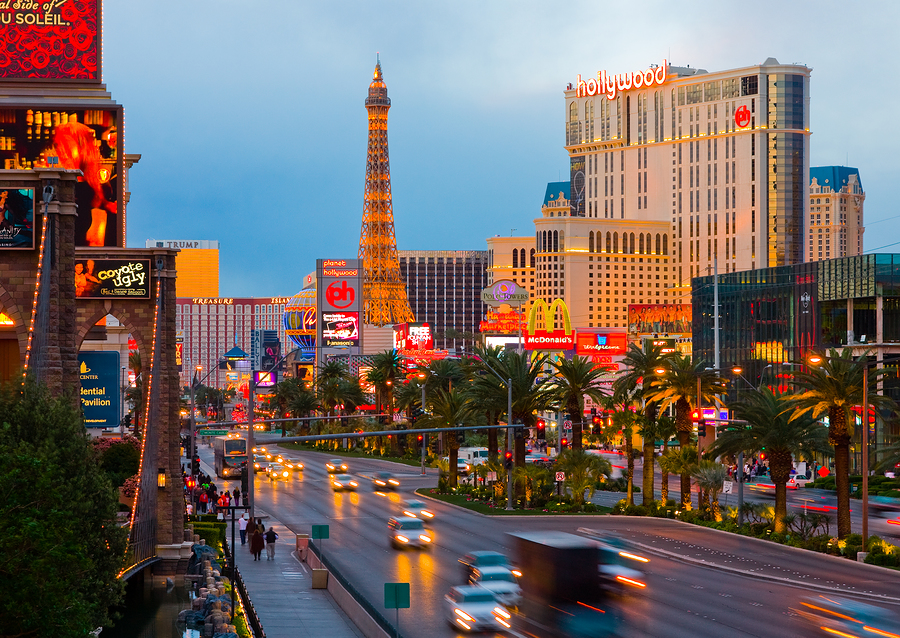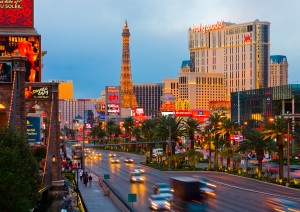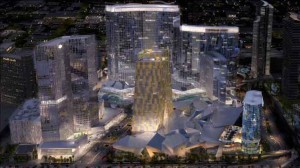
Learning From Las Vegas – Fairs, Entertainment and Other Thoughts
We just finished exhibiting at the 2011 IAFE (International Association of Fairs and Exhibitions) Conference in Las Vegas. The conference was held in and around the Great Ballroom at the Paris Hotel in Las Vegas, Nevada. The Convention and Trade Show held in Las Vegas each year, is the largest event serving fairs, shows,
exhibitions, and expositions. As a Fairground Architect and Fairground Master Planner we had the benefit of networking and learning from top industry folks and other fair professionals during the intensive four days of workshops, special seminars, round table discussions, and social events. The Trade Show allows us to showcase our firm while serving as a one-stop shop for all things fair. This year we got to show off our new designs for a Horse Barn, Equestrian Facility, Livestock Barn, Equine Arena, Exhibition Building, and a a few Fairground Master Plans.
As an architect of mass entertainment facilities there could not be a more perfect setting than to hold a show in Las Vegas. Las Vegas is everything entertainment design aspires to be – in your face, cutting edge, modern, and definitely Disneyesque. This recent visit allowed us to tour the recently completed (opened about a year ago) CityCenter. The below entry summarizes our thoughts.
The blog entry below uses several excerpts and references from the October 2010 article “What Happens in Vegas” by Paul Goldberger – originally published in the New Yorker
We all know that Las Vegas has been expanding since 2005, when Steve Wynn started the latest and largest building-boom Vegas has ever seen. High-rise, condo, hotel, mixed-use, adaptive-reuse and other projects in the Las Vegas area are in various stages of planning, development and construction.
For several years now, there has been talk about whether Las Vegas could handle what in any other city might be referred to as real architecture. In 2004, when the hotel company MGM Mirage (now known as MGM Resorts International) was looking for a way of filling in a sixty-six-acre site between two of its properties on the west side of the Strip (the Bellagio and the Monte Carlo), it hit on the idea of turning the plot into a showcase for modern architecture.
The Las Vegas Strip is constantly debuting new projects, boasting the latest in new urban architecture, design and technology. LEED certified “Green” buildings are making an entrance and many world-famous architects (starchitects) stepped up to the plate to create the critically acclaimed CityCenter, the biggest construction project in the history of Las Vegas. It has three hotels, two condominium towers, a shopping mall, a convention center, a couple of dozen restaurants, a private monorail, and a casino. There was to have been a fourth hotel, whose opening has been delayed indefinitely. But even without it the project contains nearly eighteen million square feet of space, the equivalent of roughly six Empire State Buildings. In an effort to counterpoint Las Vegas kitschiness the rolodex of who’s who in architecture was called into action. The result is a community of glittering starchitect ambition. There are major buildings by Daniel Libeskind, Rafael Viñoly, Helmut Jahn, Pelli Clarke Pelli, Kohn Pedersen Fox, and Norman Foster; and interiors by Peter Marino, Lewis Tsurumaki Lewis, Bentel and Bentel, and AvroKO (no relation to our firm). There are also prominent sculptures by Maya Lin, Nancy Rubins, and Claes Oldenburg and Coosje van Bruggen.
If Las Vegas wants to be rescued from kitsch, that remains to be seen. CityCenter has struggled in the year since it opened. But it’s been clear for a while that Las Vegas has been running out of themes. The trouble is that its effects rely entirely on dazzlement, an over-the-top gigantism that gets old fast. As Las Vegas had grown—until the recession, its expansion had helped make Nevada the fastest-growing state in the nation—the city has started to feel a little uncomfortable about its reputation as a place where developers spend billions of dollars on funny buildings.
Whether or not the buildings themselves succeed in striking a blow against Vegas kitsch, CityCenter certainly fails to live up to the claim implicit in its name—the hope that it is going to give Las Vegas, the place of ultimate sprawl, a genuine urban focus. As urban planning, it doesn’t go much farther than Caesars Palace. CityCenter is laid out not for pedestrians but as a machine for moving vast numbers of cars efficiently. There are wide ramps coming off the Las Vegas Strip, auto turnarounds, and porte cochères—all good for traffic flow but hardly what you would call urban open space. There has been an attempt to tuck the site’s enormous garages out of sight—employee cars alone number in the thousands—but they are no less visible than at any number of the Strip’s other big hotels. Like its competitors, CityCenter has no real streets. You can glide over the project on a monorail, but there is no pleasant place to walk, except inside the buildings.
Even though there is more perceived density to CityCenter (there really is no more than anywhere else on the strip), and more sophistication to its architecture, it doesn’t feel urban. Its planners have tried to cram more square footage into a tighter space than anyone else has managed in Vegas, and that may make this place seem like an antidote to sprawl. But it still isn’t much of a center, or much of a city. Indeed, as you drive around the site, you suddenly wonder if CityCenter only appears to be different from the rest of the Strip. After all, cutting-edge contemporary architecture by the likes of Libeskind and Foster has been migrating steadily into the cultural mainstream for years. Now, perhaps, it has reached the point where it is familiar enough, and likable enough, to be just another style available for imitation, like the Pyramids or Renaissance Venice. CityCenter is really the Las Vegas you already know and love, but in modernist drag.




